Trout in the Classroom

The purpose of Trout in the Classroom is to raise awareness about Idaho’s aquatic resources by providing hands-on learning opportunities for Idaho students. Trout in the Classroom encourages students to actively participate in the learning process. By observing and caring for trout, students gain an understanding and appreciation of a trout’s life cycle and habitat requirements.
Fish Fin Models
Week of April 27, 2020
This week (April 27-May 1) you will be making models to test how fins of different sizes and shapes help the fish to move through water. Review the Fish Fins Worksheet pdf and check your answers.
- You will be using a plastic bottle and plastic lids. I used a 2-liter pop bottle. Scientists use models to test ideas. When used in experiments data can be collected and used in scientific explanations about how things function and behave.
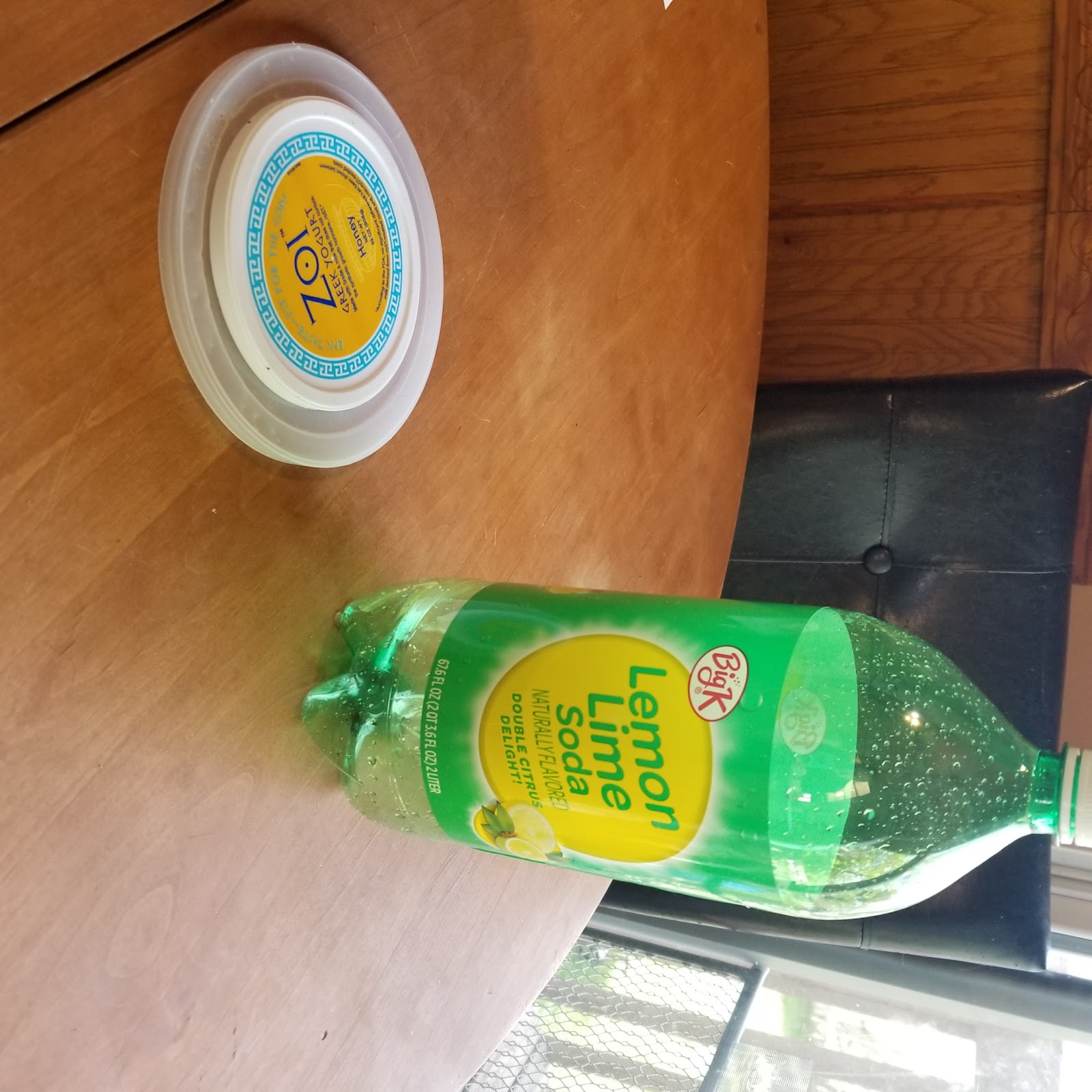
- Place your bottle with the cap on it in a tub of water. Blow on the bottle or push it through the water to see how it moves. Take notes on how it moves through the water.
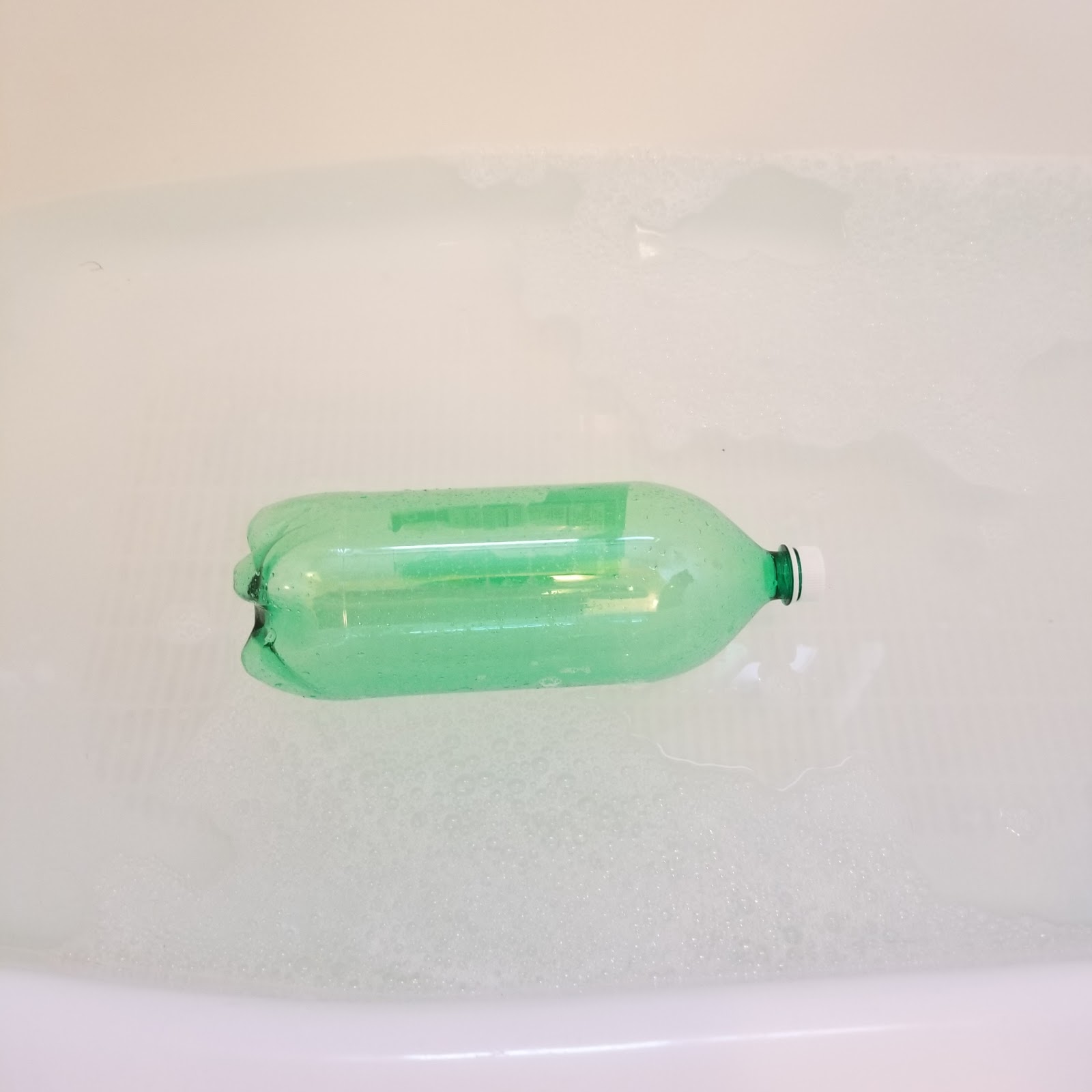
- Look at the shape of your bottle and think about fish and the kinds of fins that they use to stabilize themselves in the water. The Fish and Fins worksheet can help you on this. Draw on a piece of paper two different shapes of anal fins to try on your bottle Use the plastic lids to cut out the anal fin models. Securely attach the first fin at the rear of the bottle. I used duct tape and it worked well. Again blow the bottle or push it through the water. Take notes on what happened. Did the bottle roll or turn or did it remain stable and continue straight ahead? Next, take that fin off and try the other fin. Secure it on the bottle with duct tape and test it in the tub. Which fin worked best? Why do you think that that fin model worked better than the other? Can you think of a fin arrangement that would be even more stable?
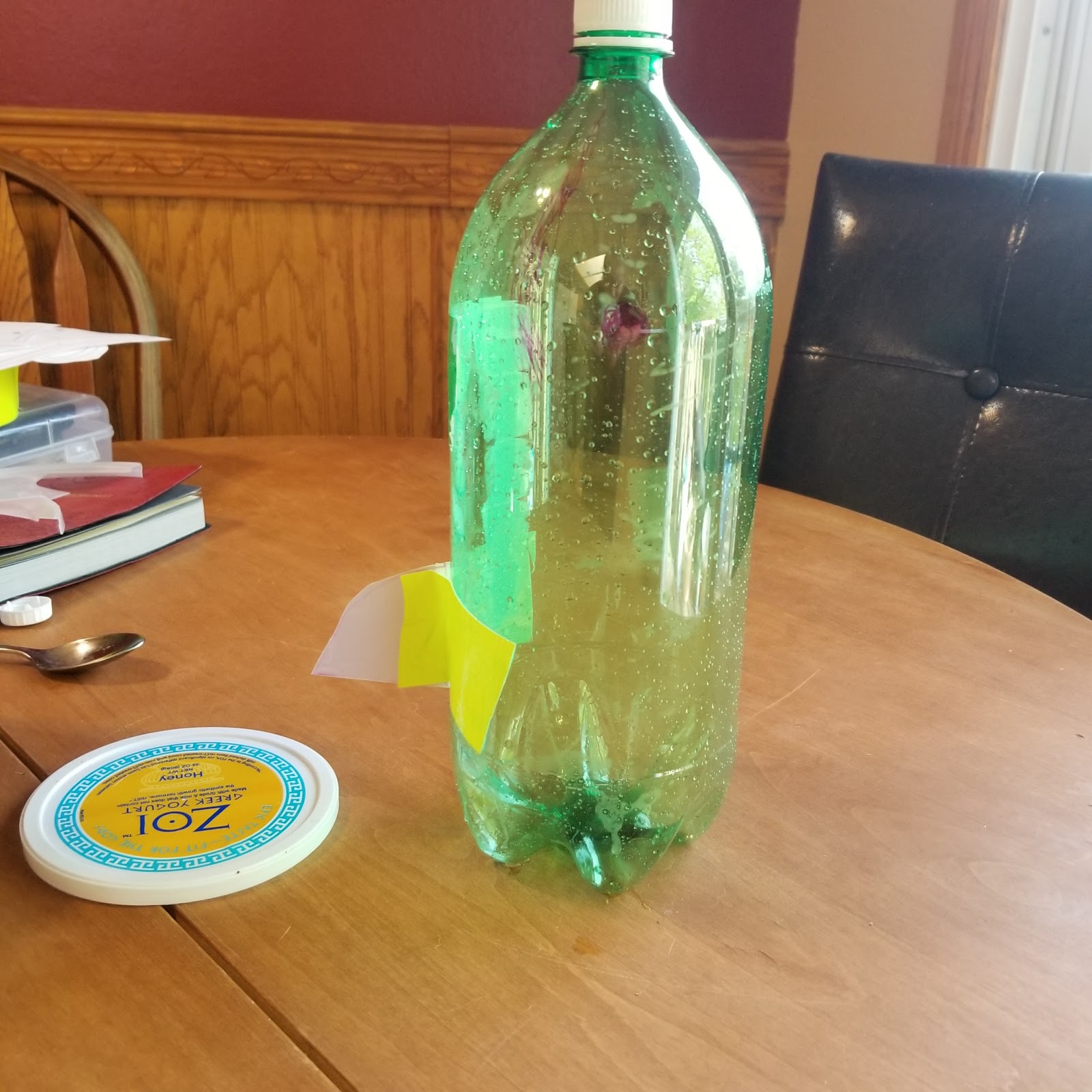
- You can also modify your model by adding a caudal fin. Use the same procedure that you did with the anal fin. Draw your caudal fin on a piece of paper. Cut out your pattern and use it as a template on the plastic lid. Cut your caudal fin from the plastic lid. Secure it in the correct position on your bottle.
- This time you will need to have the bottle submerged to test it. Partially fill the bottle with water and replace the cap. The tail will need to be underwater when you float it in the tub. Again, push the model and watch it move through the water. Record your observations. How did adding the caudal fin change the model’s motion through the water?
- You can repeat the procedure again with pectoral fins. Record your findings.
- When you have completed your experiments, take a picture of your model. Share it with the rest of the class by sending the picture to jonevir2@isu.edu. We will share the pictures of the models on this page.
- Which aspects of your fin designs were effective? Did your models imitate the functions of real fish fins? What didn’t work? What could have worked better? What did you learn from this experiment in modeling?
What fish share
Week of April 20th
There is an amazing variety of fish species living in many different habitats, from trout living in cold mountain streams to parrotfish living in tropical oceans. Even though there is great diversity among fish species, some general characteristics can be made about fish as a group.
Generally, fish have fins and a long, streamlined or narrow body that help them to swim easily through the water. The form, or shape, of a fish’s body and body parts, relates to their function, or how the parts work. Function also depends on form. This relationship exists in the natural world and also to things people invent and make.
A duck’s webbed feet help it to swim, and the streamlined shape of a submarine helps it move easily through the water. By observing and studying the different body parts of a fish, one can learn how the fish’s body functions, why the fish lives where it does, and how the fish is able
to get food. Making models is one way to learn about structures, their functions and how they behave under certain conditions. Models can be used to investigate how different types of fish fins help fish survive in their habitats. Making observations using models is one way to look at the world as a scientist.
Fish Fins
Fins are used to move, steer, stop and maintain position. Most fins are composed of fin rays covered by skin. The fin rays provide support and are necessary for fin movement.
Trout have three unpaired fins: dorsal fin, anal fin and caudal fin. The dorsal and anal fins are essential in helping the fish stay upright. The caudal fin is the ‘tail’ of the fish and thrusts the fish through the water. It also acts as a rudder to steer the fish.
Trout also have two paired fins: pectoral fins behind the gills and pelvic fins below and behind the pectoral fins. The pectoral fins act as brakes and help with side-to-side movement. The pelvic fins help with up and down movement.
Trout also possess an adipose fin which lacks fin rays. It is believed to help reduce drag and improve swimming efficiency.
For more information of fish fins check out this Fish Fin Presentation pdf.
Now that you know about the different fins, spend at least 10 minutes observing the fish swimming. Before you watch the video, write down what you think each fin will control.
Questions about fins?
-
Observe how the fish move up, down, forward, backward, turn, stop and remain still.
-
What happens when a fish moves its caudal fin?
-
Pectoral fin?
-
Dorsal and anal fins?
-
Write a description of how the fins function to help the fish survive.
- Check the TIC page 70 to see if your ideas match with those of biologists.
Next week we will be making models of fish with fins using plastic bottles and plastic lids. Try to save some over the next week if you can. One liter water bottles, two litter pop bottles, and any round plastic bottle will work.
Dichotomous Key to Identify Fish
Week of April 6th
A dichotomous key is a tool that allows people to identify plants, animals, rocks and anything that you might want to identify in nature. Here you will be using a dichotomous key to identify fish. Using a series of questions that divide the fish into two groups, you will be able to find the correct name for the fish.
Try out the online activity to identify the different fish.
If you are feeling good about using a key, here is a little harder one where you will identify aquatic critters. These include some of the critters that we studied last time as trout food. They are also important indicators of water quality in a fishing stream. After the first identification, you will need to print the image below to key out each of the critters.
What Do Trout Eat?
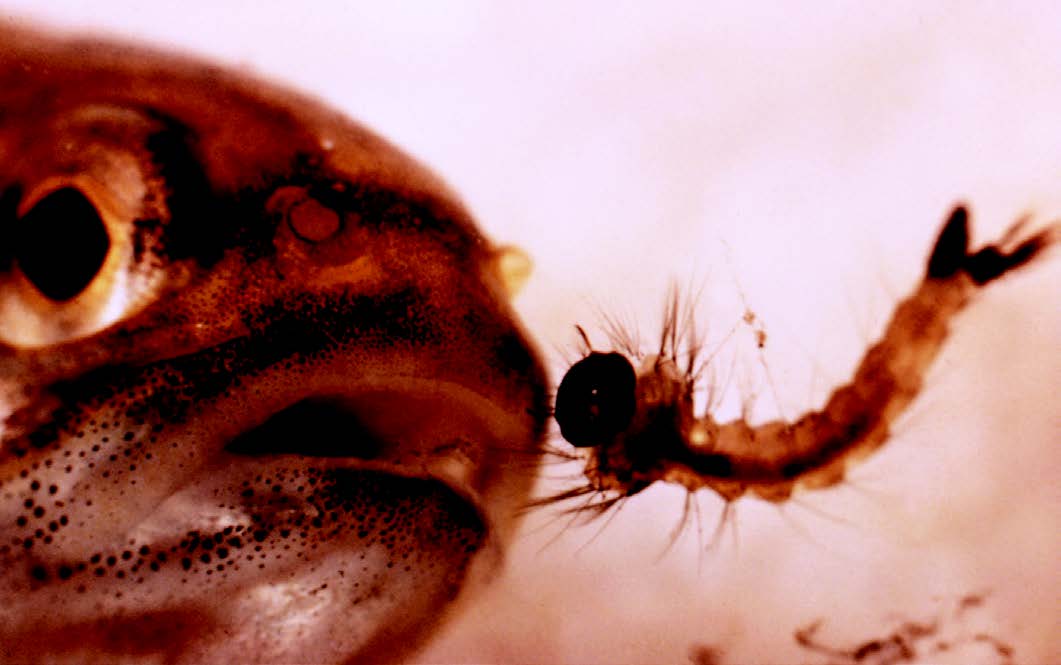
Week of March 23rd
The cold, clean rivers and streams in Idaho attract fly-anglers from across the country who come to fish for trout in a pristine environment. Fly-anglers use artificial flies as bait. Artificial flies look similar to the trout’s natural diet of aquatic macroinvertebrate species.
Macro means large enough to see with the naked eye and invertebrate means they have no backbone. These animals live on rocks, logs, sediment, debris and aquatic plants during some period in their life. Macroinvertebrates include crustaceans such as crayfish, mollusks such as clams and snails, aquatic worms and the immature forms of aquatic insects such as stonefly and mayfly nymphs. Aquatic macroinvertebrates, such as insect larvae, are a large part of a trout’s diet. The flying adult forms of the aquatic insects are also food for trout.
Different species of macroinvertebrates have different characteristics, including body shape, exoskeleton color, feeding preferences and in-stream behaviors.
To make their fishing flies, anglers closely study the species they are imitating. They then wrap hooks with thread, yarn, feathers, and other materials of various colors to mimic the macroinvertebrate. To be successful, fly-anglers need to have knowledge of what fish eat and need knowledge of the food being eaten. Anglers need to know what the macroinvertebrates look like and their habits to trick a fish into biting their flies.
This information comes from Trout in the Classroom Curriculum Published by the Idaho Department of Fish and Game Funding provided by Wildlife and Sport Fish Restoration.
Meet the insects Trout like to eat
Can you think of an insect that lives most of its life in water and builds a home for protection? It’s the caddisfly. In North America, there are over 1,200 different kinds of caddisflies; worldwide there are over 7,000! Many species of caddisflies look similar and telling them apart can be difficult.

Caddisflies are insects that have four stages in their life cycle. They lay their eggs in water. The eggs hatch, and caterpillar-like larvae crawl out. The larvae turn into pupae, and the pupae into adults. Only the adults can survive out of water.
Caddisfly larvae are builders. They make a silk from the spit in their mouths. Some caddisflies use the silk to spin webs or tunnels. These caddisflies are predators. They trap very small animals in the sticky webs. Most caddisflies are not predators. They eat dead and sometimes living plants. These caddisflies use the silk as glue. As they spin silk, they mix in sand, twigs or grass. This makes a case, or shell, around their soft bodies. The case is held in place by a pair of hooks on the tip of the insect’s body. As the insect grows, it just adds onto the case. The case protects the caddisfly. It looks like a little twig or rock in the water. This camouflages the caddisfly and makes it harder for predators to see it.
Caddisfly larvae need oxygen to survive. They use the same thing fish use to get oxygen out of the water – gills. Adults do not live in water, so they do not have gills. Air enters and leaves their bodies through spiracles. Spiracles are holes in the insects’ abdomens.
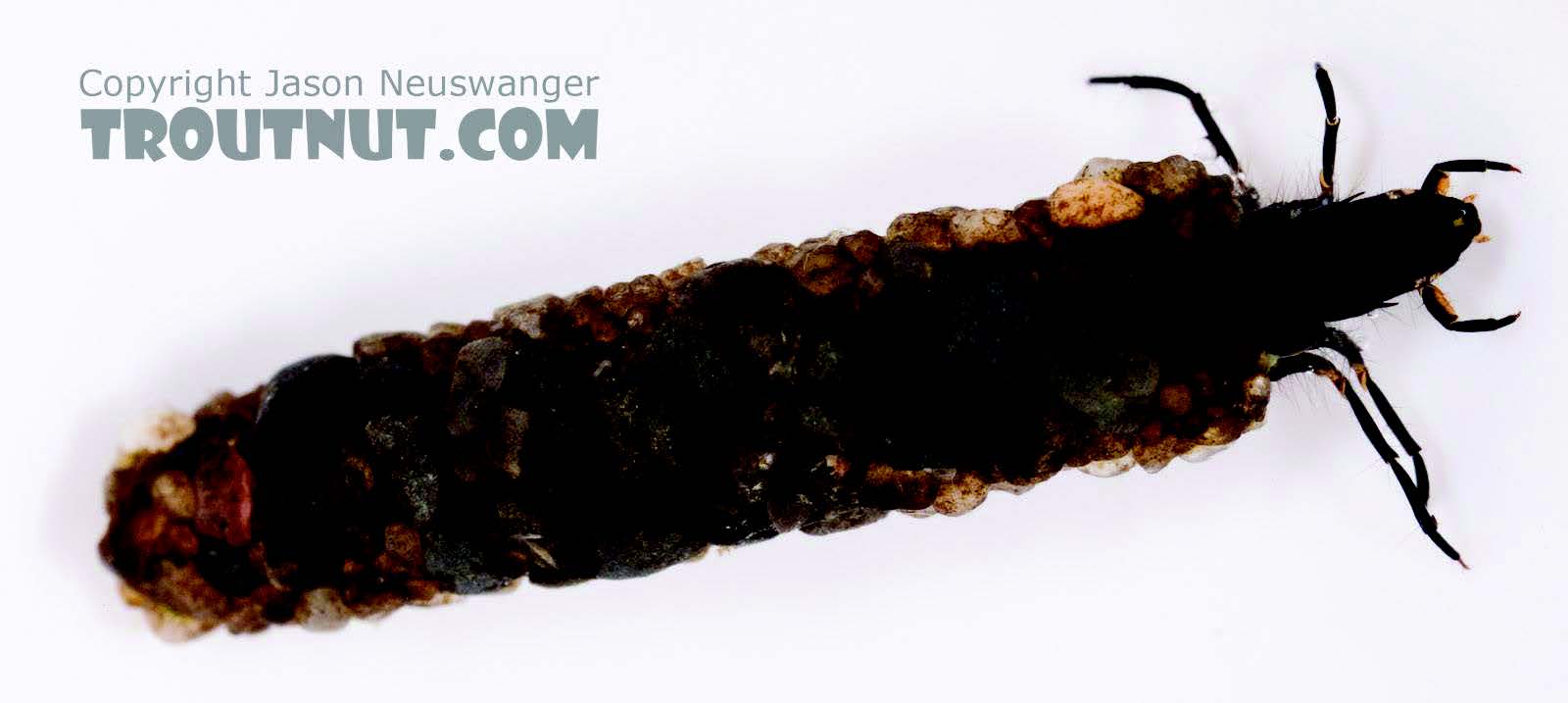
Caddisfly adults look very different from the larvae. They look like moths that have lost the scales on their wings. Long, silky hairs cover caddisfly wings. Adults are brown to yellowish-brown in color. They have big eyes and long antennae. When resting, caddisflies place their wings like a tent over their bodies. Caddisfly adults do not live long. Once they leave the water, most never eat again. They breed, lay their eggs and die. Adult caddisflies are nocturnal or active mostly at night. During the day, they hide in cool, moist places around riverbanks, lakes and ponds. At night, caddisflies often swarm around lights.
Caddisflies are very interesting insects. Look for their cases next time you are wading in a stream or pond.
Toothed dragons are flying around Idaho! Actually they are just dragonflies and damselflies. Dragonflies and damselflies are in the insect order Odonata. Odonata comes from the Greek word for “toothed.” Dragonflies have chewing mouth parts that have a serrated edge; they look a bit like teeth.
Dragonflies lay their eggs in water. The eggs hatch out into something called a naiad (NI-add). The naiad gets bigger and bigger until one day it crawls out of the water. The back on the naiad splits open, and out crawls the adult! Some species stay in the naiad stage for up to five years.
An amazing part of a dragonfly is the mouth. They have a powerful set of mandibles that are used to chop up their prey, but the really amazing part is the labium (LAY-bee-um). It is sort of like a lower jaw. When a dragonfly is immature and living in water, it likes to eat slimy things. Tadpoles, small fish and other insects are all on the menu. To help the dragonfly grab its slimy prey, the dragonfly can shoot the labium out to almost its body length. The labium has hooks on it so the prey can be dragged back to the mouth. As adults, dragonflies eat other flying insects. The adult dragonfly’s legs point forward like a basket. The basket is used to scoop insects right out of the air. Once a dragonfly has food in its grasp, dinner is served!
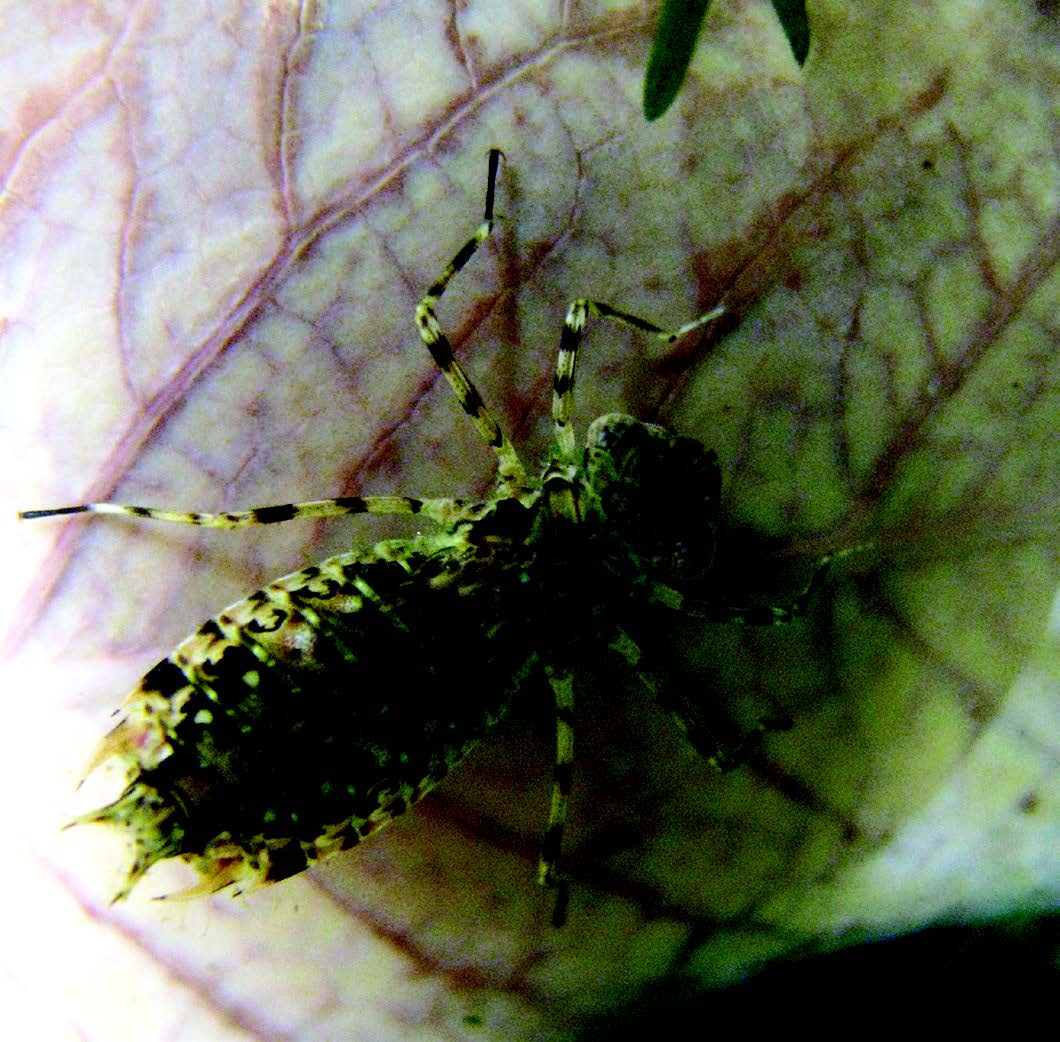
Have you ever sat along a pond on a summer day and watched dragonflies zip and buzz around you? Some might swoop down a little too close for your comfort! What you are witnessing is a battle over territory or space. It’s the males, not the females, madly buzzing around the pond. Some dragonflies are very territorial. They will try and chase off anything that gets too close. They will chase off dragonflies, birds, and even humans!
The largest dragonfly in Idaho is the green darner. The adults can reach a size of just over three inches. This dragonfly is a strong flyer. A group of bird watchers along the eastern coast of America saw an amazing event during the fall migration of green darners. They actually saw a green darner take down a ruby-throated hummingbird. Now that’s some amazing flying!
Idaho has 67 species of dragonflies and damselflies. Get outside this summer and look for them. You can find a dragonfly just about everywhere in Idaho where there is water!
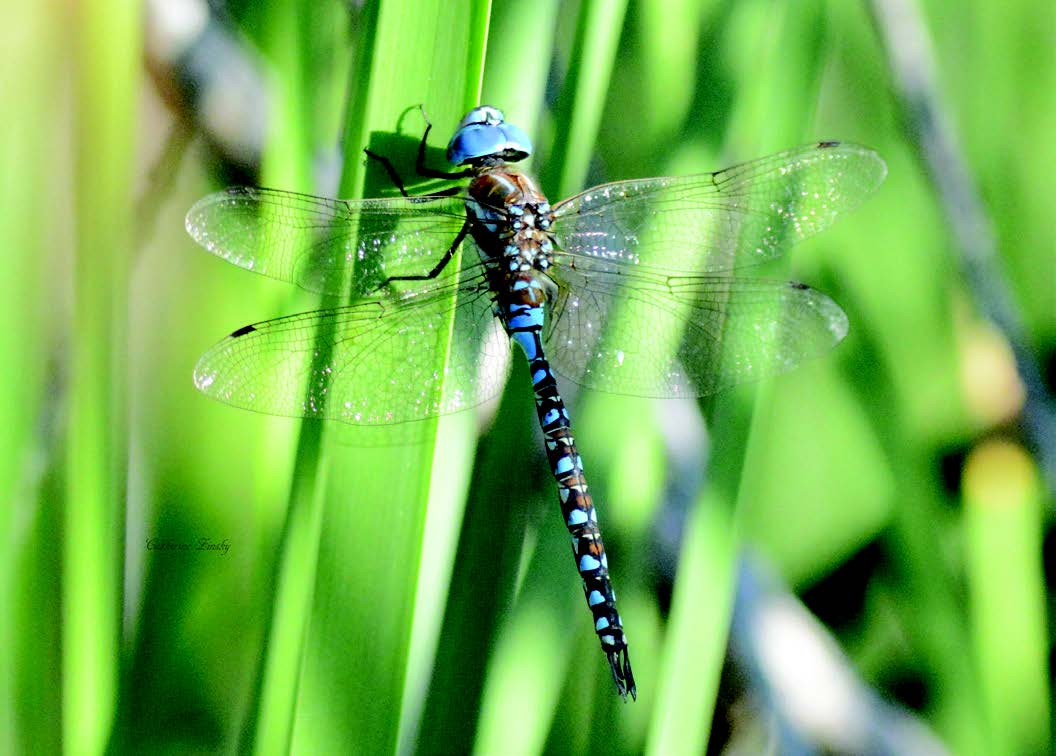
EEEEE - A high-pitched whine buzzing in your ear. You may hear it while sitting around a campfire or while playing in your backyard. Just mention mosquitoes, and the skin on some people starts to itch and crawl. Whether you love them, hate them or just tolerate them, one thing’s for sure, mosquitoes are interesting insects.
There are about 2,700 species of mosquitoes in the world. They may live in hot tropical forests or cold northern lands. Mosquitoes can be found from sea level to over 10,000 feet above sea level. Although they may be found in many different places, all mosquitoes need water. Mosquitoes lay their eggs in water and develop and grow in water. They have four life stages: egg, larva, pupa and adult. All life stages of a mosquito, except for the adults, are aquatic.
Male and female mosquitoes do not look the same. Females are usually larger than males and have thin antennae. Males have bushy, hairy antennae. Mosquitoes have short lives. It takes between seven to 14 days for a mosquito egg to become an adult. Adult female mosquitoes can live several weeks. Males usually live less than a week.
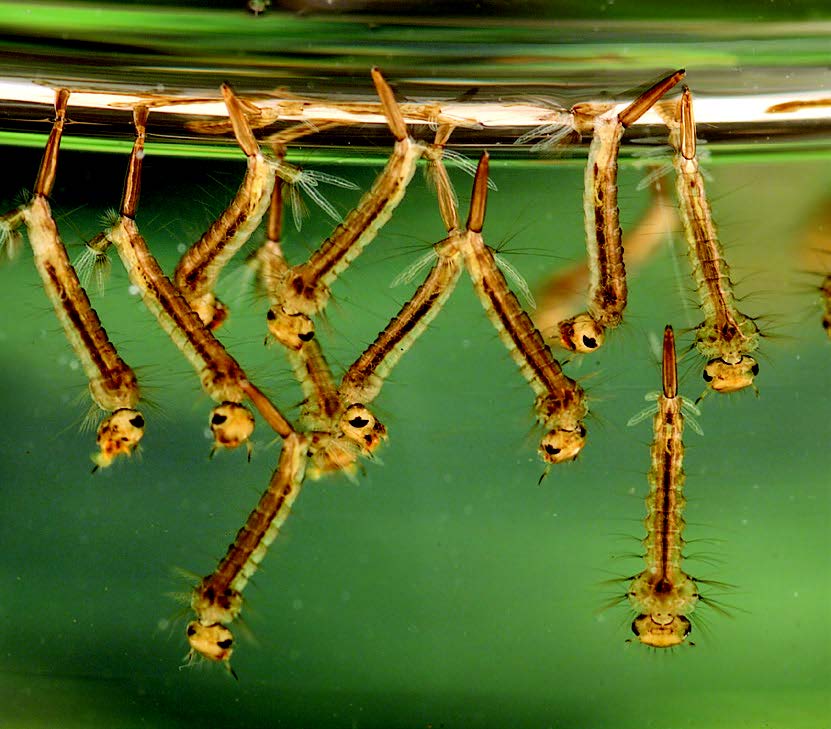
Mosquitoes eat different things at different stages of their lives. Larvae eat plants. They also filter food from water. Both male and female adult mosquitoes eat nectar. Only female mosquitoes suck blood. They need a protein found in blood to make their eggs. Mosquitoes use their senses of sight and smell to find a blood meal. They see movement and infrared light given off by warm bodies. They can also smell chemicals, like carbon dioxide, on your breath, as well as smell chemicals on your skin. A mosquito can smell you when it is over 100 feet away! Have you ever noticed that mosquitoes seem to bite certain people more often? It’s true. Everyone has a different smell. Mosquitoes do like the smell of some people over other people.
The tip of a mosquito’s mouth has six needle-like parts for cutting and sucking. To suck blood, a mosquito slips the tip of its mouth into the skin. The mosquito then injects anticoagulants (an-ti-ko-AG-yu-lents) into the cut. This keeps the blood runny and thin, so the mosquito can suck up the blood. The anticoagulants are not supposed to be in your body. Your body tries to break up and get rid of the chemicals, causing an itchy bump.
Although mosquitoes may drive you crazy with their biting, they are an important part of nature. Mosquitoes are food for many animals. Some bats eat 600 mosquitoes in just one hour of hunting. Mosquitoes also help pollinate flowers when drinking nectar.
Next time you hear EEEEE, try to think of something positive about mosquitoes. They may irritate you with their biting, but they are important to have around.
Mayflies are classified in the order Ephemeroptera (e-fa-mer-OP-ter-a). This long, funny name comes from Greek words that mean “living a day.” This is a good name for mayflies; as adults they only live for a few hours or days.
Mayfly adults are gray, brown or yellow in color. They have a slender abdomen that slants upward with two or three long “tails” at the end. Their front wings are large and shaped like a triangle. The wings look a bit like the sail on a sailboat. Their back wings are very small and often difficult to see. Some mayflies do not have back wings at all.
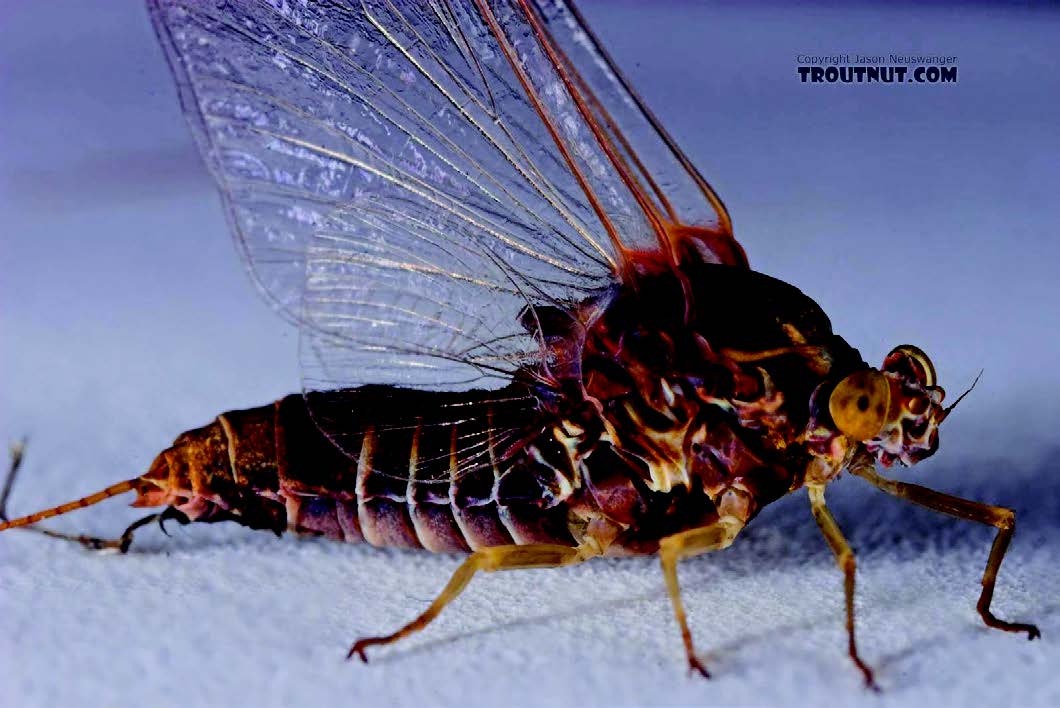
Adult mayflies have one thing to do as adults. They need to mate and lay eggs. Adult mayflies cannot eat. Their mouths are small and not made for eating. This is one reason why they die soon after becoming adults. Male mayflies gather in large swarms. They move in a kind of dance together looking for females. Females lay their eggs in different ways. It all depends on the type of mayfly. Some mayflies fly close to the water, dip their abdomen on the water surface and lay the eggs while flying. Other females lay their eggs in strands attached to plants and other things in the water. Some just lay their eggs and let the eggs fall where they may. The females will die as soon as their eggs are laid. The males die after mating.
Mayfly eggs may hatch very quickly. Some eggs will hatch as soon as they hit the water. Others may take a while longer. A naiad (NI-add) emerges from the egg. They have biting mouthparts. Most mayfly naiads are scavengers. They scrape algae from rocks in the water and eat whatever plants or tiny water animals they can find. The color of a naiad may be green or brown. Their color varies depending on what they eat! Naiads may stay in the water for up to four years. When they leave the water they molt. This mayfly is called a subimago. Subimagoes have cloudy or smoky wings. Think of them sort of like short-lived teenagers. They molt and then they are adults. The adult mayflies have clear wings. Mayflies are the only insects that molt after they have wings!
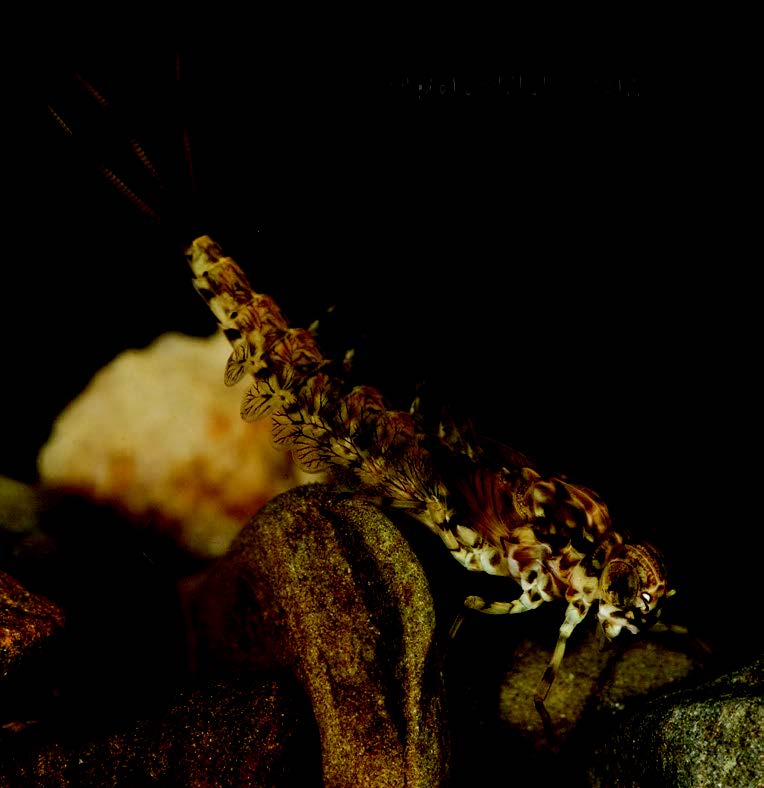
Mayflies really are marvelous. Look for mayflies in the spring and summer. They are not only seen in the month of May!

